Gondolas: Venice canal ride is all romance and no schlock

VENICE, Italy — Italy drips with romance like amatriciana sauce off a strand of bucatino. Everywhere are reminders of the love you found or the love you lost. Where do you find the most heart-massaging or heartbreaking scene, depending on your current love life? How about a glass of wine on your hotel balcony overlooking the sea in Positano? Maybe a stroll past the beautifully lit Pantheon in Rome. Or a lavish lunch next to a sun-splashed vineyard at a farm stay in Tuscany. But what’s considered the most romantic scene of all in Italy?
A gondola ride in Venice.
If I replaced the word “romantic” with “schlocky,” a gondola ride would top that list, too. During my many visits to Venice, I’ve always sneered at these the same as I do marriage proposals in stadiums and mandolin serenades.
These narrow, black boats plying canals with gondoliers dressed like court jesters seem like tourist traps in Hell. From a gondola, the Grand Canal always looked like the River Styx.
However, I recently caved. Post-lockdown Venice changed. As I wrote last week, with so few tourists the city resembles a small seafaring town where street traffic is slow and cruising gondolas are few. Marina and I, in town on assignment, decided if we were ever going to take a gondola ride, no time would be better unless another pandemic hits. And guess what?
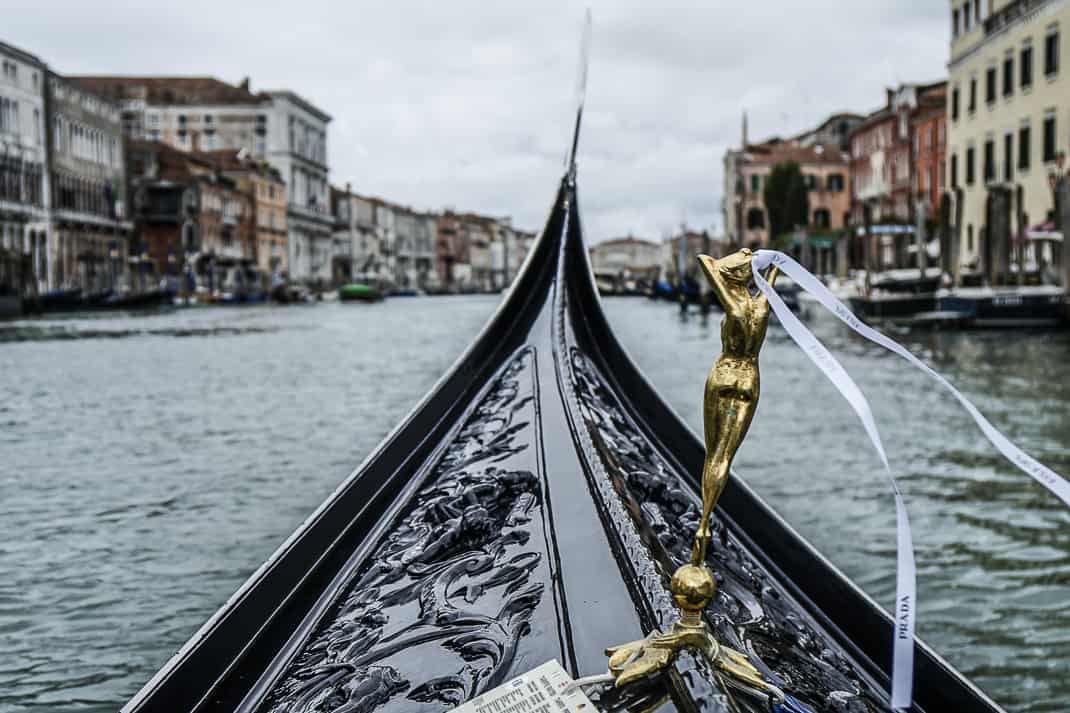
The gondola ride was off-the-charts on the Italian travel meter. I put it up there with dinner overlooking Rome’s Piazza Navona and sipping Lugana wine on the banks of Lake Como.
It was as soothing as a private bath, as scenic as a Michelangelo masterpiece, as interesting as a tour of ancient ruins. It was the highlight of our three-day stay, the best Venetian weekend we’ve ever had.
It was impulsive and spur of the moment, the kind that makes traveling so full of surprises. I was interviewing a couple of bored gondoliers below the Rialto Bridge, itself as empty as anyone has ever seen it. The gondola pilots were lamenting about the terrible business during the pandemic. Of the approximate 400 licensed gondolas, only about 40 operated over the winter.
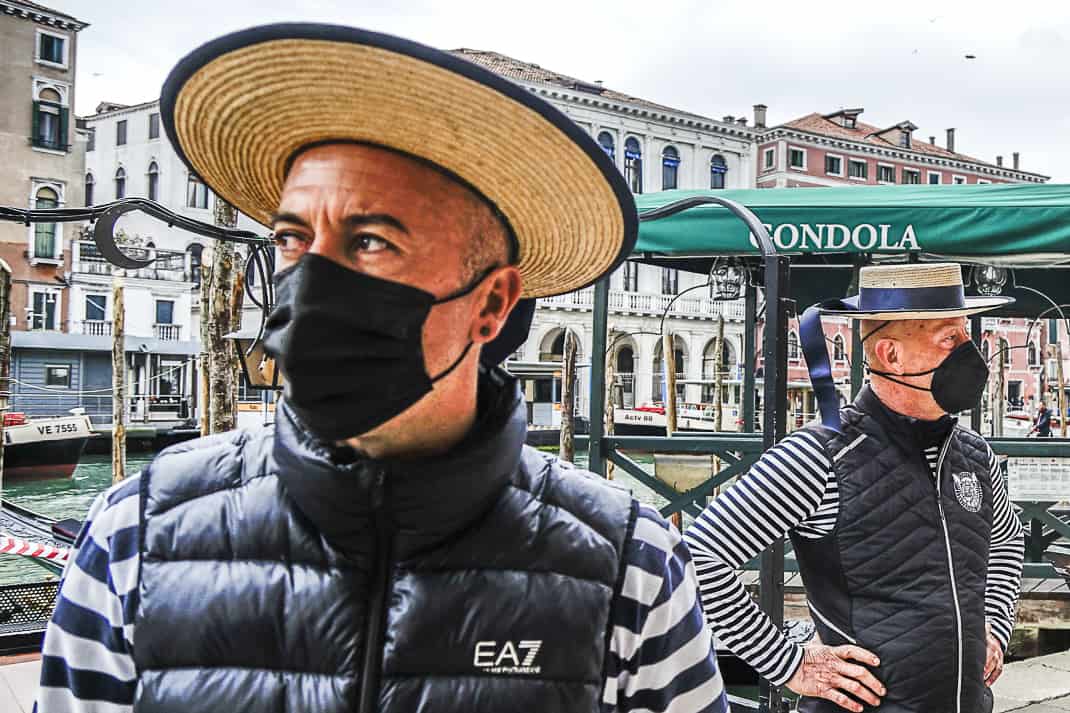
“I stayed home,” said Luciano Pelliciolli, 55, a gondolier for 35 years. “Winter was like a holiday. With the pandemic, it was a big problem. I just walked around town.”
Meanwhile, Marina was talking up another gondolier who gave us a discount on a 45-minute ride. Hurting for business and not seeing any coming on the near empty pathway along the canal, they knocked down the 120-euro price to 80. I looked out at the calm Grand Canal. I remembered that morning crossing bridges over small canals void of boat traffic. I looked at lovely Marina.
Yes, a gondola ride in post-lockdown Venice would be perfect.
As American astrologer Rob Brezsny once wrote, “May you dream of taking a trip to the moon in a gondola powered by firecrackers and wild swans.”
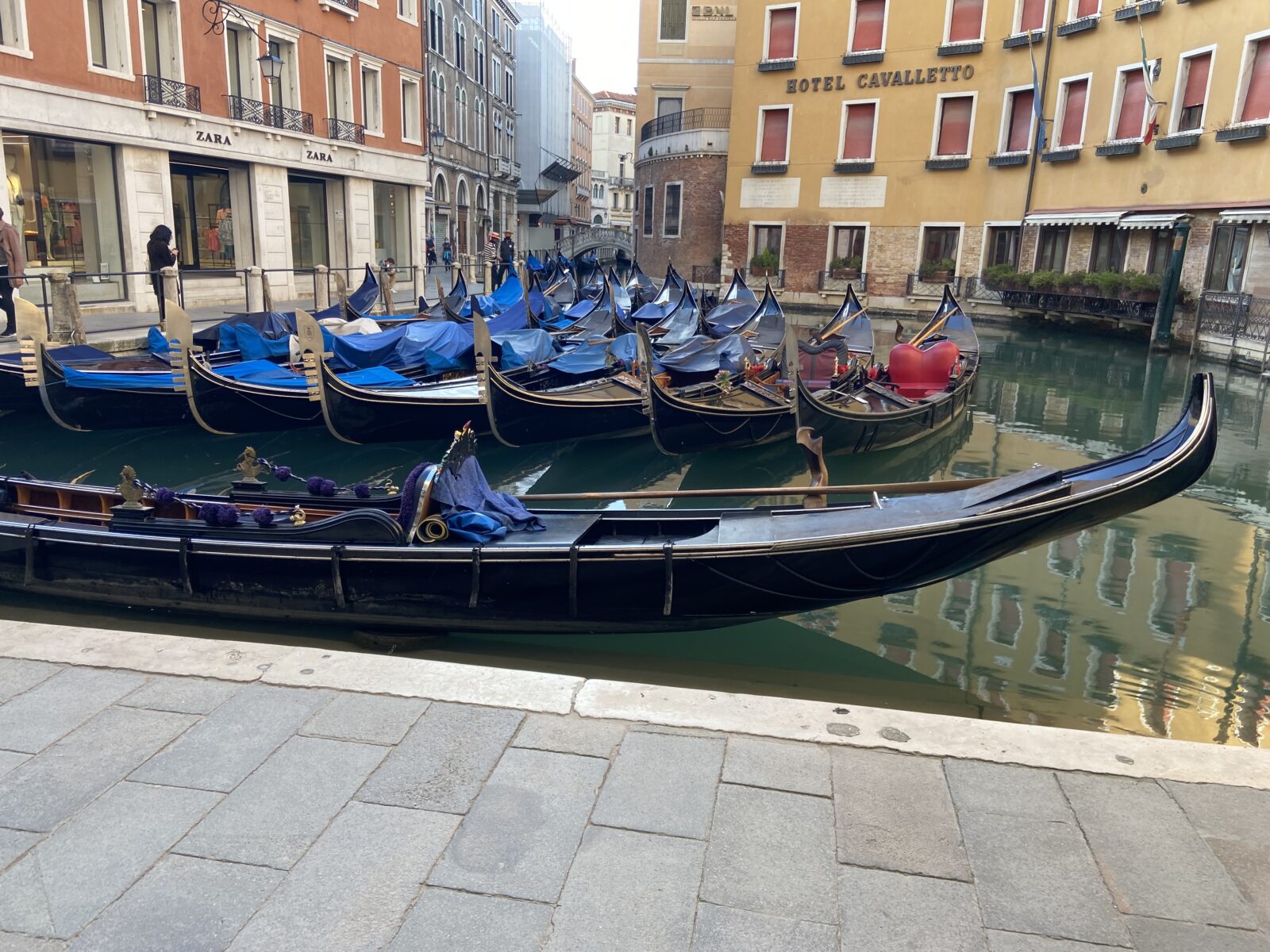
Luciano would be our pilot and we precariously climbed into the narrow boat that’s a work of art in itself. It is 35 feet long and only four feet wide, weighs 1,200 kilos and is made of 280 pieces of hand-made wood. We sat in black, padded high chairs and stretched our legs next to well-polished menacing gold seahorses adorning the port and starboard sides. Gold water cherubs decorated the tops of seats.
It wasn’t a boat. It was a throne.
Six years ago I took a gondola lesson here but I learned on something called a batea a coa de gambero, a flatboat that is actually older than the gondola. It was like paddling the Queen Mary. Luciano, a seasoned pro, took his long pole and paddled us effortlessly across the wide Grand Canal to the first narrow waterway where we snaked our way through a city that looks completely different while drowning in bliss.
Facts about gondolas
Some things you didn’t know about gondolas:
- The first documented mention of a gondola came in 1094 when they were built for public transport for Venice’s shallow mudflats. In the 17th and 18th century, Venice had about 8,000-10,000 working gondolas and were used only for transportation.
- The gondola business is controlled by a guild that hands out licenses after strict testing of 400 hours over six months. It includes gondola piloting prowess, Venetian history and foreign language skills. Of the 400-plus registered gondoliers today, only two are women.
- According to Newsweek, some gondoliers make up to $150,000 a year.
- The canals are shallow. The Grand Canal is five meters in the middle but the side canals are only two or three meters. The gondoliers still paddle the boat rather than “punt” the boat by pushing against the canal bottom as many believe.
The biggest surprise of our adventure is it’s more than romance. It’s a history lesson. Luciano, a native Venetian, was a superb professor. The prize of paddling a 1,200-kilo boat for 35 years is a strong upper body. His youthful face belie his 35 years except for his white goatee. He wore a navy blue vest over his blue-and-white horizontal-striped long-sleeve shirt. His flat hat with the wide, flat brim and the trademark black sash hanging off the back label him as a gondolier from clear across the Grand Canal.
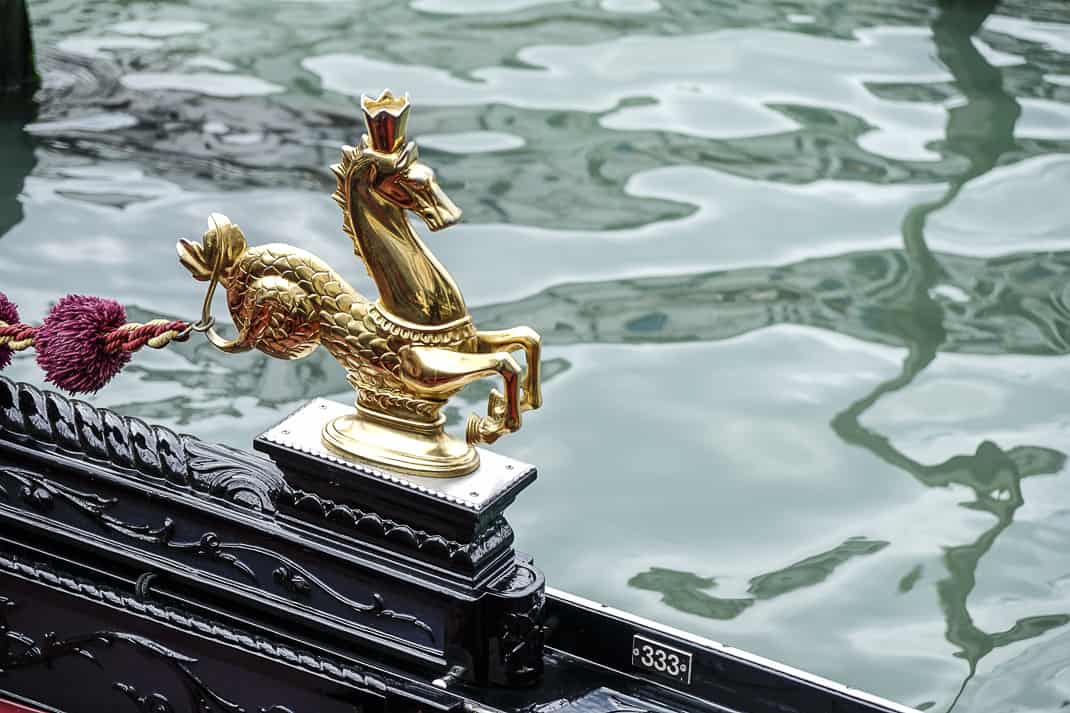
As we slowly crossed the canal, we saw only one other gondola. Even the public transport vaporettos and cargo boats that fill the canal in non-pandemic springs were few. We were approaching a small side canal, and bells pealed from nearby churches. We were not entering Hell.
We were entering heaven.
Venice celebrities
It was an overcast 60 degrees and despite the languid speed of the boat, the wind off the water dropped the temperature to sweater weather. Marina and I weren’t huddling in a lover’s gondola embrace. She was in a matching seat on the other end taking pictures; I was listening to Luciano’s insider tour.
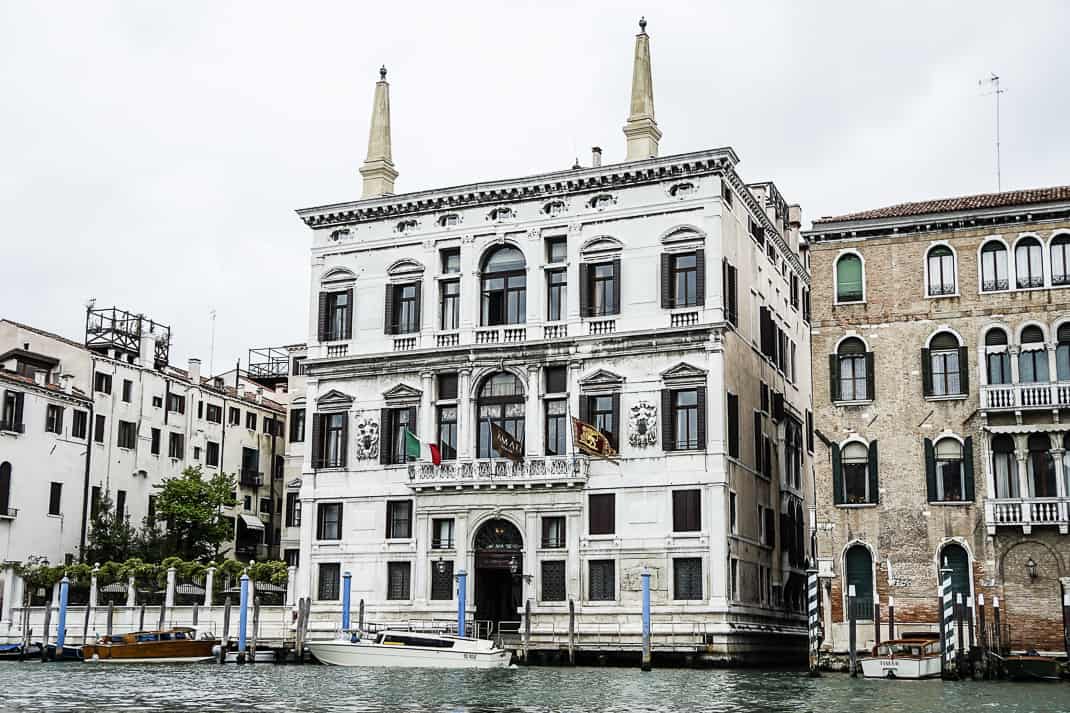
He pointed to a white, three-story building with two gold steeples and a grand balcony overlooking the Grand Canal. It’s the 16th century Aman Venice, the city’s first seven-star hotel (1,550-5,500 euros a night). Dripping with Rococo art, it’s where George Clooney got married six years ago.
Venice flood
As we entered the quiet side canal, I asked about the flood in November 2019 that killed two and did millions of dollars worth of damage. He pointed to a mark on a building where the red paint became lighter, as if someone switched color tones halfway up.
“That was where the water went during the flood,” he said. “Seventy centimeters (2.3 feet). There is one alarm atop a church. So we were ready.”
He lives on the second floor of his building but his neighbor below him got flooded. It’s why first-floor apartments in Venice are cheaper.
Clooney isn’t the only celebrity who’s cruised these waters. Luciano remembers a tall American whom he paddled through the same route we took. Venetians ran out of their homes to point and wave and yell “Buongiorno” to the man who was only a stranger to Luciano. The smiling American returned their waves and smiles.
Luciano wondered what all the fuss was about.
“I like all sports but I don’t like basketball,” he said. “It was Lebron James and his wife. I didn’t say a thing. Then later I went and saw him on Youtube …”
We passed under a tiny bridge and I noticed how quiet it was. Venice post-pandemic is its quietest it has been in centuries. In the back canals from the comfy, padded seat of a gondola, the silence was like classical music in a dream. We could hear the water ripple from the paddle. We heard birds singing above. I could hear children chatting another bridge away.
This, folks, is the Venice of your fantasies.

We passed a tall, blue-green marble statue of a man in an elegant topcoat and his hand inside his coat. It’s Ludovico Manin, the last president of the Venetian Republic (1789-1797) whom Napoleon Bonaparte ran off into exile and only went outside long enough to get insulted by bitter Venetians.
We turned a corner into another small canal, passing another gondola carrying an Italian couple, the first we’d seen in 20 minutes. We went by a red building.
“That’s where Mozart stayed during Carnival,” Luciano said.
Mozart in Venice
Wolfgang Mozart was 15 when he came to Venice with his father in 1771 and stayed in the apartment that was more storied than Mozart, who at the time was already a known pianist. The owner, Francesco Faletti Count of Castelman, used it as a brothel and a place where he trained noblemen to become shysters. The shady romance of the flat reportedly attracted Mozart and maybe inspired him for his public performance in the city.
Speaking of romance, I admit I wanted Marina to stop snapping photos and be by my side. Venice grabs you in its sweet embrace and doesn’t let go. I got caught up in the emotion and asked Luciano about the romance of gondola rides.
He said so many men propose on these trips, he long ago lost count.
“The man is always nervous,” he said. “They tell me, ‘Where is the best position to propose?’ And every girl says yes.”

Instead, I asked Marina to take a photo of the red building with the plaque to our right. It was the home of German poet Wolfgang Goethe who lived here from 1786-88 when he was 37 to 39 and where he wrote “Italian Journey,” based on his diary from those days.
I was learning things about Venice that escaped my research. Gondola rides are nearly as informative as they are romantic. Funny, my jaded impressions of modern gondola rides are captured in a photo I once saw on the Internet. It was a gondola floating down a canal with beautiful buildings and greenery on both sides. In the boat were two young couples who weren’t even looking up. They were reading their cell phones.
Luciano says it’s especially maddening to him.
“I say, ‘Why do you come in the boat? Why are you looking at your phone? Stop your virtual world!’”

We turned another corner and started heading back to the Grand Canal. Luciano stopped the boat and pointed to a little plaque on a wall that has layers of faded paint. The plaque reads “4-11-66.” On Nov. 4, 1966, the canal rose six feet and flooded the city. The plaque marked the high-water mark. It stood three feet over my head in the boat.
After the flood, rains came down for three more days. Residents walked in water up to their shoulders. The Doge Palace, which housed the Venetian government for 700 years, filled with nearly five feet of sea water. The flood caused $6 million in damage and 75 percent of businesses were damaged or destroyed.
But these are a resilient people, these Venetians. Once, Luciano stopped to chat with two idle gondoliers in the Venetian dialect, a delightful mix of Italian and Spanish.
I had heard stories that the pandemic had one good effect: It cleaned the canals. With so few tourists requiring so few boats, the canals remained calm and the bottoms remained unstirred. In fact, I could look down a few feet below the surface. I wasn’t expecting to see a school of dolphins but I was surprised to see anything at all.
“It was crystal clear in March,” Luciano said. “It was possible to snorkel.”
Venice’s rats
I asked him about the rats, which are famous in Venice, especially after a flood. You can see them scurrying around St. Mark’s Square when the waters recede. He said they’re good swimmers and you can see them from the gondola on night trips.
“At nighttime,” he said, “it’s like Jurassic Park here.”
Just then I saw something splash just to my right. It looked the size of a cat. I could see it below the surface. I’d heard the rats here are big but …
… instead, surfacing came the beautiful, sleek, black-and-white head of a graceful cormorant.
It made me think: A pandemic in a city famous for rats. That would be a “Jurassic Park” sequel.
“Quarantine was invented in Venice,” Luciano said. “‘We had pestilence (Black Plague). We were quarantined for 40 days 400 years ago. That came from China, too.”
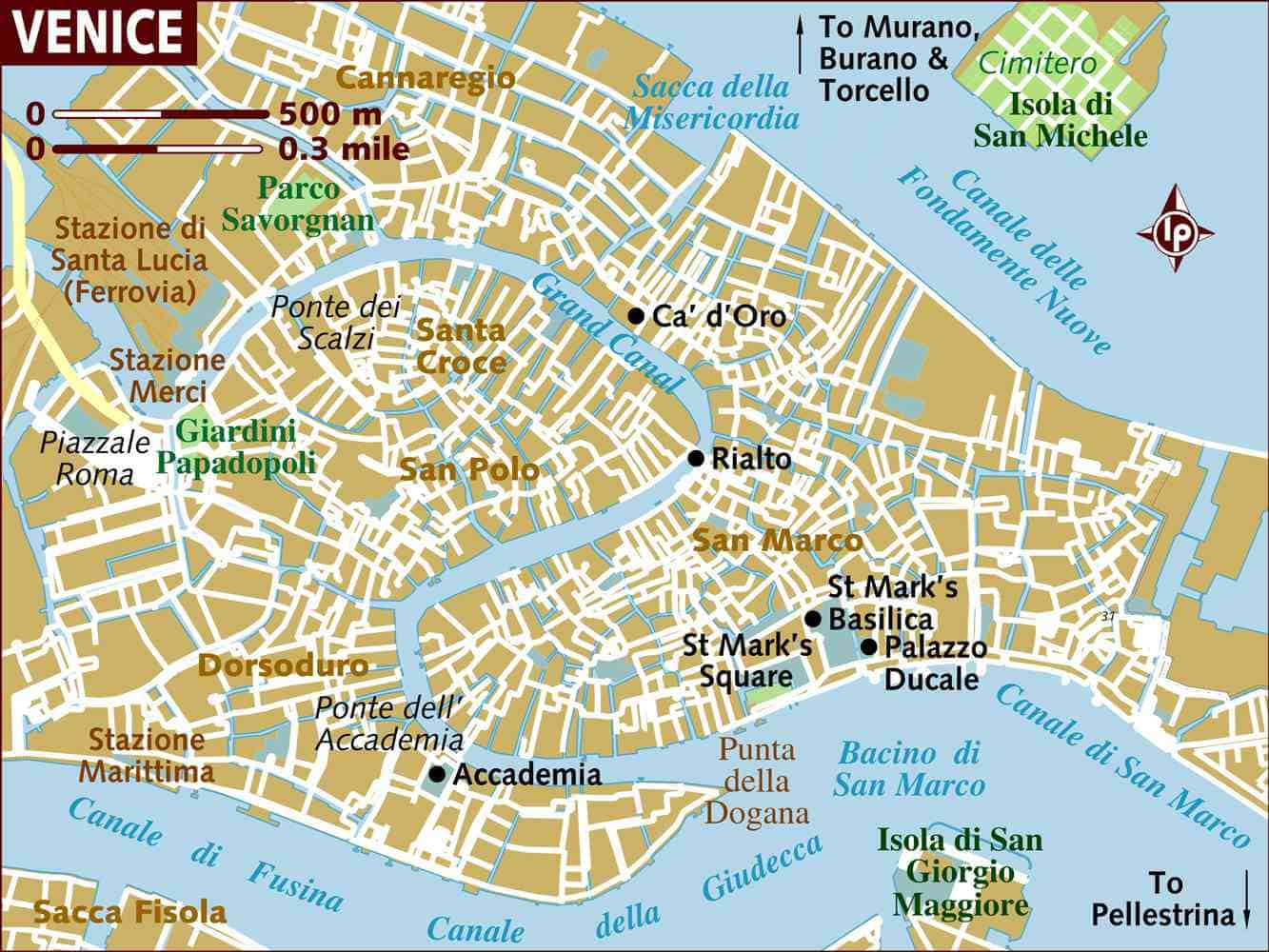
We re-entered the Grand Canal which after negotiating tiny side waters looked like the Amazon River. We went past the empty Rialto Market and the nearly empty Rialto Bridge, Venice’s first bridge built 400 years ago.
We parked the boat and I gladly paid Luciano along with a 10-euro tip. He joined his colleagues, silently whiling the time away on their cell phones or sitting in nearby cafes. I had all new respect for these men (and two women). Luciano treated me like I was the first customer of his career and showed me a side of Venice, his Venice, of which he is so proud. Venice is more than a tourist trap. It’s a once-vibrant city, the remains of a powerful republic, that will fascinate mankind until the end of time. Luciano made me believe Venice is worth saving.
Pandemics can kill people, but they can’t kill the gondolier.
If you want to go …
When to go: Italy prime minister Mario Draghi Friday announced that starting Monday, foreign visitors can enter Italy with one of three requirements: One, a certificate of vaccination, either two doses from Pfizer, Moderna and AstraZeneca or one dose of Johnson & Johnson; two, a certificate of recovery (six months validity); three, a negative swab from within 48 hours of arrival. Any of these will qualify you for a National Green Pass which will allow you to travel within Italy.
How to get there: Italo (italotreno.it) has two trains a day from Rome to Venice lasting four hours for 69 euros if bought at least a week in advance. Prices are higher if purchased sooner. Trenitalia (lefrecce.it) has several a day ranging from 24.25 euros for eight hours to 77.90 euros for four hours.
Costs: 30 minutes 80 euros, after 7 p.m. 100 euros, 45 minutes 120 euros, one hour 160 euros. The costs are set by the city and gondolas can be found all along the Grand Canal and numerous side canals.
For more information: Venezia Unica, 39-041-2424, www.veneziaunica.it.


May 11, 2021 @ 8:46 am
Hi John!
Thanks for this great write up. We’ve been to Venezia three time and my husband (an Italian) has refused a gondola ride every time. Maybe after reading this he will indulge me when we visit in June. We are both double-dose vaccinated and cannot wait to get there! Have you a recommendation for a sweet hotel?
May 11, 2021 @ 9:19 am
Thank-you, I found this article to be enlighteneing. I have visited Venice numerous times as well and I will now consider a ride on the Gondola.
May 11, 2021 @ 9:54 am
Glad you were converted, John.
My one and only gondola ride — Las Vegas doesn’t count — came 35 years ago, during a vividly remembered vacation where a friend and I spent 3 1/2 splendid weeks getting from Rome to Madrid. (Travel tip: Always take your first European vacation with an easy-going, screamingly funny friend who minored in art history.)
We’d met three English college women who were traveling on the cheap. In our capacity as high-rolling Yankees, we anted up for a five-passenger gondola excursion. Nothing happened with the college women, but the gondolier sang “Santa Lucia” on a warm, soft September evening, and it was perfect.
A few years later, I came across an alarm clock that would wake you with your choice of about 20 tunes. One of them was “Santa Lucia.” Sold.
May 11, 2021 @ 6:49 pm
Thanks John !! Your descriptions are like being there. Loved the pic of you on your ‘throne’, with Luciano behind you. Also can’t believe someone would be glued to their phone on one of these rides.
May 12, 2021 @ 7:17 am
Whatever happened to freedom of movement, for many (Europeans) the impression is that cross border travel both regional and national is being obstructed by vaccine bureaucracy. A QR strategy that appears to have been scribbled out on a tablecloth at a clandestine eatery in the darkest day of lockdown. Have the long months of lockdown dimmed and cancelled our critical thinking skills – supressing the appetites for inter-European freedom of movement? As a long haul rail traveller the bureaucratic obstructions being signalled down the line warn that travel is not going to be easy during summer 21 and beyond. The suspicion is that freedom of movement as a liberty is being decimated and cross border movements will become a bureaucratic privilege only to be gifted to the few.
May 12, 2021 @ 11:21 pm
Wonderful article! Thanks for transporting me back to La Serenissima ❤️